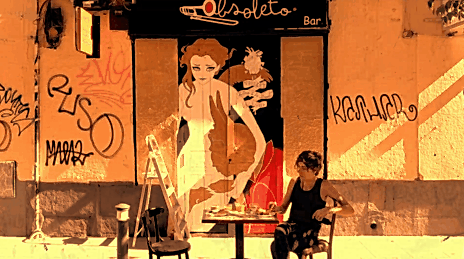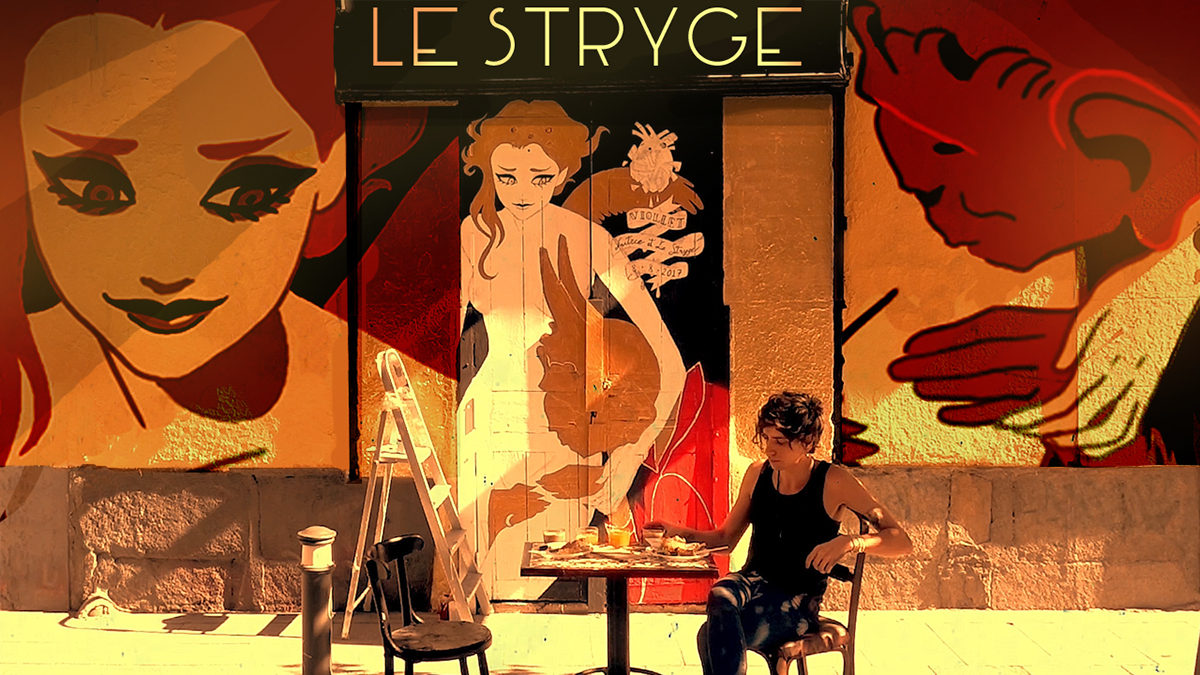

This summer I had the opportunity to do a small urban art project on the entrance doors of Obsoleto, a rock bar that you can find flâneuring through Malasaña, Madrid.
I had complete freedom regarding the theme and the materials for the task, so I decided to pick these two heavenly wicked characters from a story I wrote ages ago:

The angel Lutèce and the demon Le Stryge,
from Viollet, the Chimerical Legend of the Melancholy Demon.

Since I was a kid I've always been massively inspired by the city of Paris. By its story and by each one of its streets. By the cathedral of Notre-Dame de Paris and by each one of the petrean statues that live there since the Middle Ages. And also by all the newer ones, sculpted in the 1850's during the famous restoration that took place thanks to the well-known novel of Victor Hugo protagonized by Quasimodo.

Personally, I always relate myself to one particular element of the cathedral: Le Stryge, that gloomy chimère located in the south tower of Notre-Dame on that beautiful balustrade in which he stares at his city every passing day since the nineteenth-century. I always wondered why this gargolyc statue had so much strength and meaning to me since I first saw him when I climbed up to the balcony of the cathedral when I was around twelve years old.

Is Le Stryge bored of being there? Is he sad witnessing our failures? Is he paying for his sins? Is he melancholizing some kind of past life? Is he a good demon? Is he really evil? Is he actually ironically laughing at all of us sticking out his tongue?
He remains silent, asking us back the very same questions.

I guess his creators, monsieur Viollet-Le-Duc and monsieur Victor Pyanet, brought the perfect amount of ambiguity in their design to make us mortals wonder.
To me, it's the same thing people seem to be talking about regarding the uncertain smile of the Mona Lisa. She's often regarded as a symbol of the emotional enigma, with a gesture that at first glance shows a tender smile, but then reveals a grimace that seems a mockery or even shows an air of sadness.
Well, Le Stryge's ennui had always had the same effect on me.

Personally, in Viollet (this story of mine), Le Stryge is no other than the lord of downstairs, the first ever fallen angel, kicked out from the reign of Oniria and condemned to live as a horned monster in the depths of Insomnia for falling in love with another angel, the cherub Lutèce.
Angels have no sex, right? Or so the Scriptures said... So, as you can imagine, the Chief Executive Officer of Heaven was pretty angry with him for breaking the law.

In his eternal silence, countless times portrayed in photographs, paintings and etchings, Le Stryge was actually telling me his personal and astromantic story. This is what this diabolical statue is yearning for and staring at everyday from his panoptic balcony in Notre-Dame: Lutèce, his angel.
Lutetia, his city. The old -and yet the most beautiful of them all- Paris.

















